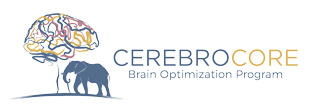Science of Focused Breathing
![]()
Focused Breathing combines the incredible benefits of Gamma Brainwave Guidance technology with the scientifically proven effectiveness of Heart rate Variability Training to optimize memory function and help prevent Alzheimer’s.
The Heart Brain Connection
![]()
There is a common misconception that the heart is simply a pump responding to signals sent from the brain. You may be surprised to learn that there are more signals traveling from the heart to the brain, than there are from the brain to the heart. The effect of heart activity on brain function has been researched extensively over the past 5 decades. Several research studies have shown that these heart signals have a profound influence on higher cognitive functions such as memory, attention and problem solving. In other words, not only does the heart respond to the brain, but the brain continuously responds to the heart.
What is Heart Rate Variability?
![]()
Scientists and physicians once believed that heart operated much like a metronome, dutifully beating at a regular steady rhythm. They assumed that each beat occurred at a specific interval – like the second hand on a clock. However, this is far from the case! In fact, the rhythm of a healthy heart is remarkably irregular with the time period between each heartbeat always changing.

This naturally occurring variation between each heartbeat is referred to as Heart Rate Variability (HRV). This diagram shows four heartbeats recorded on an electrocardiogram (ECG). Note the variation in the time interval between consecutive heartbeats.
What Controls Heart Rate Variability?
![]()
The variation in time between each heartbeat is controlled by a primitive part of the nervous system known as the Autonomic Nervous System which is made up by two different types of nerves. Signals coming from the sympathetic nerves accelerate the heart, while signals coming from the parasympathetic nerves slow the heart down. In a balanced nervous system, our hearts are constantly getting mixed messages – commands to increase Heart Rate from the sympathetic nervous system and commands to decreases Heart Rate from the parasympathetic nervous system. These mixed messages cause the resulting Heart Rate to be in a constant state of fluctuation.

How Does Heart Rate Variability Effect Memory?
![]()
When you have high heart rate variability, it means that your body is responsive to both sets of inputs (parasympathetic and sympathetic). This is a sign that your nervous system is balanced, and that your body is very capable of adapting to its environment and performing at its best.
On the other hand, if you have low heart rate variability, one branch is dominating and sending stronger signals to your heart than the other causing less variation between beats. Low HRV is a sign that your nervous system is unbalanced and not functioning optimally.
The term used to describe high heart rate variability is High Coherence and the term for low heart rate variability is Low Coherence. Multiple scientific research studies have demonstrated the relationship between Heart Rate Variability and memory. In summary, these studies have concluded that low heart rate variability (low coherence) is associated with memory impairment and high heart rate variability (high coherence) is associated with high performance on memory evaluations.
STUDY
Kim et al., 2006
FINDINGS
Low HRV was associated with cognitive impairment
STUDY
Shah et al., 2011
FINDINGS
Increased HRV was associated with higher verbal learning and memory
STUDY
Elias et al., 2017
FINDINGS
Low HRV is associated with cardiovascular risk factors that are also related to lower levels of performance on cognitive tests
What is Gamma Brainwave Guidance Technology?
![]()
The term Gamma Brainwave Guidance refers to the process of using sounds to guide the brain to resonate at the Gamma Frequency (40Hz). For example – if you listen to sounds in a Gamma frequency, your brain will begin to mirror that frequency and you will start producing Gamma brainwaves. The Gamma brainwave frequency is associated with improved mental performance, improved memory and a decrease in plaque formation associated with Alzheimer’s. Research has shown that when the brain is producing a healthy Gamma rhythm, brain levels of beta-amyloid plaquing associated with Alzheimer’s in mice fell by 40-50 percent after only one hour of exposure to Gamma frequencies.
The CerebroCore Memory Optimization Program couples Gamma Brainwave Guidance technology with Focused Breathing to maximize cognitive and memory performance.
The Good News!
You can train yourself to create a state of high coherence. As you begin to convert your heart rate variability from low coherence to high coherence, you will begin to see improvements in memory, attention, cognition, sleep, blood pressure and the extra added benefit of improved cardiovascular health.
The CerebroCore Memory Optimization Program couples Gamma Brainwave Guidance technology with Focused Breathing to maximize cognitive and memory performance. Our studies have shown that using the CerebroCore Focused Breathing tool alone, improved memory evaluation outcomes.
